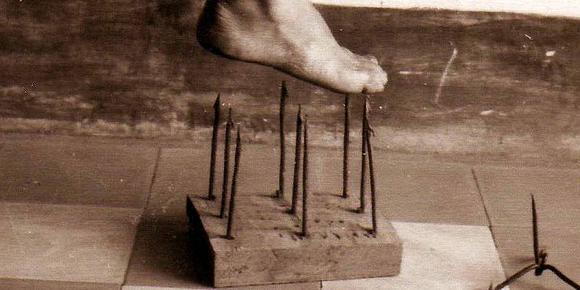
- posted: Jan. 30, 2017
Although pain may be one of the more unpleasant sensations we experience, it is arguably one of the most useful. Yes, its main job is to alert you to injury but there are many other aspects to pain that are just as beneficial. It helps protect us, it remembers the past, and it decides what is truly important. All of these work together in order to keep you safe and (hopefully) injury free in the future.
Pain: the Protector
Pain from injury, prolonged posture, and muscle strains are all normal occurrences that we experience throughout our lifetime. No one really likes pain, but without it we would likely not be here today. One of the main jobs it performs is to keep us protected in times of injury and to minimize further damage.
Take stepping on a Lego brick for example, while yes it is excruciatingly painful, our body has a built in safety mechanism. At the first sign of Lego-induced tissue damage, our brain sends out the pain signal and our nervous system activates a reflex that simultaneously jerks the painful leg up and stiffens the non-painful leg for extra support. Afterwards, due to the pain, your body will favor the good leg allowing the damaged tissue to heal more quickly thus guarding you from further damage. Basically, the brain has decided that this event was significant enough to physically alter how you move in order to protect you. Our body has reflexes like this all over and can be observed in instances such as when you touch a hot stove or strain a muscle in the low back. It is a highly effective system and can be seen in almost all injuries that are significant.
Pain: the Memorizer
Not only does pain stop us from injuring ourselves in the present (with the mechanism above), it stops us from experiencing an injury in the future as well. If, while walking home, you get stung by a bunch of bees while next to a certain tree, the tissue damage gets interpreted by the brain as significant and will produce pain, motivating us to swat at the bees or to get as far away as possible. What’s even more important is that the memory of that painful experience helps keep us out of danger and stops us making the same mistake. The next time we need to walk home we are more likely to find another, bee-free, route that bypasses that tree. This is no different than the child that touches the hot stove, the memory of that painful experience will make it highly unlikely they will ever get their hand near it again. Pain truly is the great memorizer, all it takes is one incidence and it will make sure you remember it for the rest of your life.
Pain: the Decider
We have all heard those stories where people will perform amazing feats all while being severely injured. Take a shark attack for example, many survivors have reported that they experienced no pain as they were bit, that all they felt was a tug or a bump. While being a very severe injury, the brain does not send out the pain signal because it serves no purpose in this situation. It is much more important for the individual to either fight or flee, and these pain signals would simply be white noise in a system that needs all channels clear.
Just the opposite, everyone has experienced the agony of getting pricked by a pin or suffered from stubbing his or her toe. These can be the most painful experiences ever, but how could these hurt more than being bitten by a shark? Well, it all comes down to the brain and the situation involved. If you aren’t doing anything necessarily important at the time of the pinning or stubbing, your brain can divert more attention to these injuries.
It isn’t the amount of tissue injury that matters when it comes to the quantity of pain, as they are usually completely unrelated. What does correlate to more pain is the situation. The amount of pain of the same injury can be changed by simply where you are (battlefield vs home), who you are around (boss vs alone), what you are injured by (huge bee vs small bee) among many other things. Your brain interprets the entire situation and decides if pain is an appropriate response.
Importance
Ok so pain isn’t all that bad, but why does that matter? Well, if we simply understand the mechanism in place, the research shows that you can change your pain. This is exceedingly important for the nearly 20% of people who suffer from chronic pain syndromes, as the brain has decided that (perhaps falsely) you are in danger and need to do something about it. Many of these chronic pain sufferers have found help from pain psychologists (who help them understand their pain among many other things), instead of heading down the slipper slope of pharmaceuticals or nerve blocks.
The more we understand pain, the
better we can deal with it in the future.
The next time you strain your back or hurt your knee playing basketball,
remember that your limp or stiffness or spasm or pain is there for a reason and we shouldn’t necessarily “push
through” the pain. Just by learning
these concepts you can help yourself or anyone you know live more fulfilling
and pain-free lives!
Where To Learn More
To learn more about this subject, I highly recommend you read Explain Pain by David Butler and Lorimer Moseley. It is a great resource and explains difficult topics very easily. Another helpful book, but a little bit more technical, is Pain: the Science of Suffering by Patrick Wall. An interesting take on pain, as he was suffering from cancer at the time. As always, you are encouraged to email me or comment with any questions you may have!
Office Hours
By Appointment Only
8:00 am - 7:00 pm
Closed
8:00 am - 7:00 pm
8:00 am - 7:00 pm
8:00 am - 7:00 pm
9:00 am - 12:00 pm
Closed
